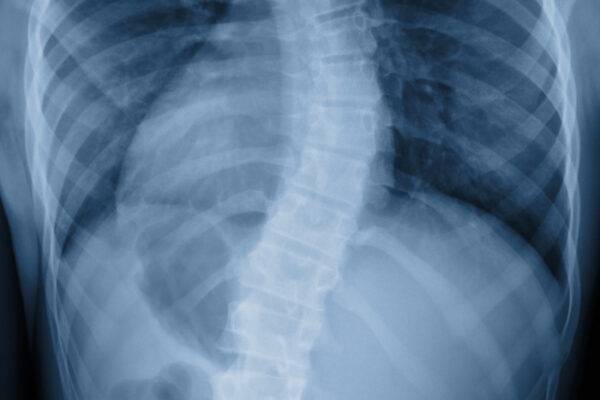Backpacks are intended for convenience, but they can also be a source of pain for children who lug them around. Thousands of kids report injuries due to backpacks each year. Overloaded packs and improper usage are often the culprits in these injuries.
The statistics may be surprising to some, as Matthew Dobbs, a WUSM pediatrician at St. Louis Children’s Hospital, outlines the risks of wearing a backpack and preventative measures that can be taken in the following St. Louis Post-Dispatch article.
Lugging a hefty backpack can cause pain
(Republished with permission from the St. Louis Post-Dispatch. This article originally ran in the Health & Fitness section on Monday, September 6, 2004)
By Dr. Matthew Dobbs
Backpacks come in all sizes, colors and fabrics, and offer kids a fun way to express their own sense of style while helping organize books and papers.
But even though backpacks are practical, they can strain muscles and joints and cause back pain if they’re too heavy or used incorrectly.

According to the U.S. Consumer Products and Safety Commission, more than 7,000 children were injured last year due to overloaded backpacks, some weighing as much as 45 pounds. Experts recommend that backpacks weigh no more than 10 to 15 percent of a child’s weight, but the average backpack weighs in at 20 percent of his or her weight.
In fact, 10 to 19 percent of children miss school or sports activities every year because of pain caused by heavy backpacks. And 30 to 50 percent of adolescents complain of pain related to backpack use.
Stress on the spine
To understand how heavy backpacks can injure kids, it helps to understand how the back functions.
The spine is made of 33 bones called vertebrae; between the vertebrae are discs that act as natural shock absorbers. When a heavy weight, such as a backpack filled with books, is incorrectly placed on the shoulders, the weight’s force can pull you backward.
To compensate, you often bend forward at the hips or arch the back, which can cause the spine to compress unnaturally. The heavy weight can cause shoulder, neck and back pain.
Here are some things kids should do to lighten the backpack load:
Limit personal items.
Don’t carry the pack by the strap or sling it over one shoulder; use both straps to distribute the weight evenly.
Wear backpacks over the strongest muscles, in the midback.
Adolescent girls ages 11 to 16 are most at risk because they experience a growth spurt during that age bracket. Girls often weigh less than boys, but still carry the same amount of backpack weight.
Kids who walk to and from school are also more likely to suffer back pain from heavy packs, because duration of use increases the risk of injury.
Relief
The good news is that back pain due to overloaded backpacks is usually temporary. The extra weight doesn’t cause structural or long-term damage to the spine, nor does it cause scoliosis.
When we treat patients for backpack pain, we usually prescribe a 10-day supply of anti-inflammatory medicine such as Motrin, and suggest lifestyle changes to help reduce weight and the amount of carry time. In some cases, physical therapy may be recommended.
Teachers and educators realize that improper backpack use is a health concern, and schools are implementing an array of methods to help address the issue. Some offer digital and electronic homework assignments; others provide duplicate set of books, one for school and one for home.
The key is to keep children healthy so that they can go about their lives and do the things they want without unnecessary pain.
Dr. Matthew Dobbs is a Washington University pediatrician who specializes in orthopedic conditions at St. Louis Children’s Hospital and Shriners Hospital for Children.
Copyright 2004 St. Louis Post-Dispatch, Inc.


